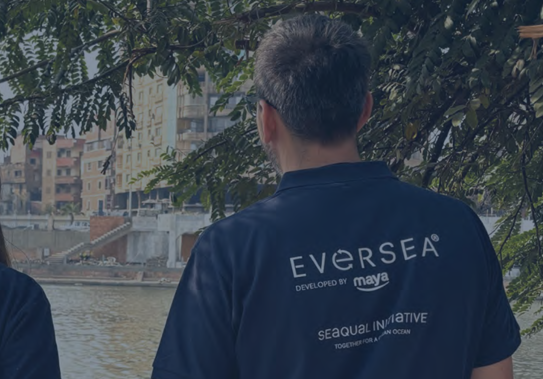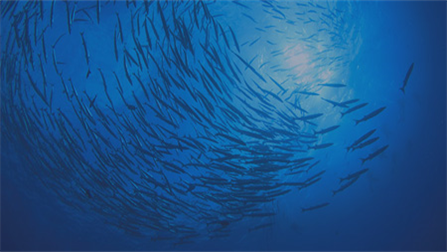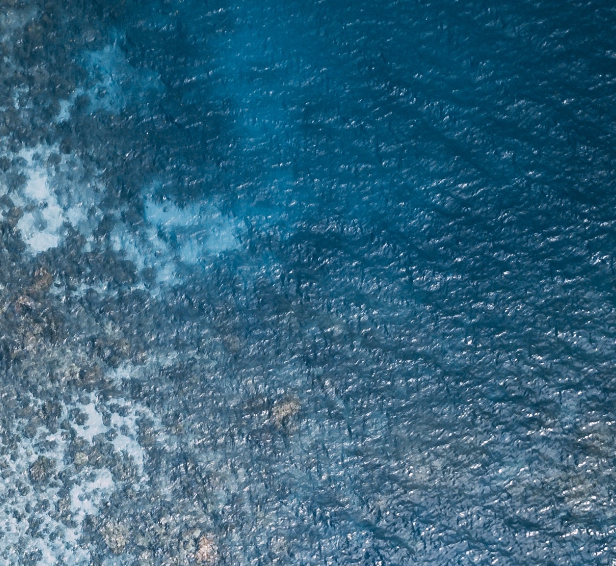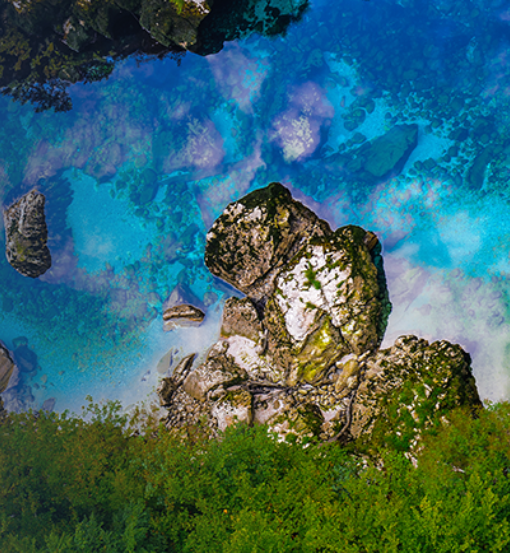Grupo Maya's Commitment to Circular Economy and Ocean Conservation
Start Reading

1. Company at a Glance
In this case study, we will see how Grupo Maya decided to launch the Eversea® TECHNOLOGY project as a strategic response to ocean pollution and the growing demand for sustainable products. Developed in collaboration with the Seaqual Initiative, this circular economy project focuses on recovering marine plastic waste and converting it into high-quality recycled materials for use in cleaning products. Through this initiative, Grupo Maya integrates environmental responsibility into its production model while reinforcing its commitment to innovation, transparency, and the Sustainable Development Goals (SDGs).
Cleaning and Hygiene
Industry
1991
Founded
Spain
Headquarter
63
Number of Employees
2. The Challenge
Grupo Maya decided to launch the Eversea® TECHNOLOGY project in 2020 in response to the escalating global concern over ocean pollution, particularly the environmental threat posed by plastic waste. The company recognized that raising awareness alone was no longer sufficient and that tangible, integrated action was urgently needed.
This strategic move was influenced by both external and internal drivers. Externally, customers were increasingly demanding sustainable and transparent products, while European environmental regulations were evolving toward stricter sustainability compliance. Internally, Maya’s leadership felt a growing sense of responsibility to align their operations with the SDGs and embed sustainability across their business model.
3. The Action
Actions taken by Grupo Maya in advancing sustainability:
Strategic Partnership Formation
Grupo Maya began the Eversea® TECHNOLOGY project by analyzing leading initiatives in marine waste recovery and identified Seaqual as a key strategic partner. Seaqual, an initiative dedicated to marine conservation and sustainability, transforms marine litter into high-quality textile solutions. This collaboration not only provided Grupo Maya with access to innovative recycled materials but also reinforced its alignment with circular economy principles, enabling the company to reduce ocean pollution while developing a sustainable product line.
Supply Chain Expansion
As part of its circular economy strategy, Grupo Maya reengineered its production to integrate recycled marine materials—mainly recovered through its partnership with Seaqual—into new product lines. This included adapting processes to accommodate the properties of recycled content without compromising quality or durability.
For example, the company’s cleaning product line includes eight different tools—such as broom, mop, dustpan, bucket with wringer, multipurpose cloth, microfiber cloth, mop frame, and mop—manufactured with a combination of post-consumer and marine-recovered plastic. For plastic items, the material is made of 50% marine plastic and 50% post-consumer plastic. For textile items, the composition is 20% marine plastic and 80% post-consumer plastic.
Workforce Training and Skills Development
For example, the company’s cleaning product line includes eight different tools—such as broom, mop, dustpan, bucket with wringer, multipurpose cloth, microfiber cloth, mop frame, and mop—manufactured with a combination of post-consumer and marine-recovered plastic. For plastic items, the material is made of 50% marine plastic and 50% post-consumer plastic. For textile items, the composition is 20% marine plastic and 80% post-consumer plastic.
External Awareness Campaigns and Activities
The company has actively participated in awareness-raising events such as roundtables and industry conferences, where it shares its experience transitioning towards a more sustainable and circular economy model.
Cultural Integration of Sustainability
Beyond technical execution, Grupo Maya focused on embedding sustainability into its organizational culture. Employees played an active role as ambassadors for environmental transformation, promoting continuous improvement and innovation from within.
4. Next Steps
Increase the number of items made with marine and post-consumer recycled materials within the Eversea® line.
Expand collaboration to new regions for marine waste recovery.
Work towards obtaining international environmental certifications to validate and communicate their sustainability commitment.
5. Overcoming Barriers
Technical challenges in adapting production lines to process recycled marine materials, requiring operational adjustments and new manufacturing methods.
Initial increase in production costs, associated with the transition to sustainable materials and process changes.
Increase in product prices: The use of recycled materials, while environmentally beneficial, required design adjustments and raised product prices—though some clients, particularly in the industrial and eco-conscious segments, responded positively to the sustainable offering.
Customer skepticism regarding the quality and performance of recycled products, especially in the early phases of implementation.
Need for additional funding to offset higher initial costs, prompting the company to seek European financial support.
Communication gaps, requiring targeted campaigns to educate stakeholders on the environmental and product benefits of the new materials.
6. Impacts & Results
Recycled over 30 tonnes of marine plastic in 4 years, significantly reducing the use of virgin materials and supporting circular production models.
Improved brand perception and market positioning, as confirmed by customer satisfaction surveys and strengthened stakeholder trust.
Two products in the cleaning line—a mop and a floor cloth—have obtained the EU Ecolabel certification, demonstrating compliance with strict eco-design and quality criteria. The company aims to progressively certify more items in the product line.
Launched new sustainable products using Seaqual Yarn, high-quality recycled textile fiber made from marine plastic waste, helping meet growing customer demand for environmentally responsible alternatives.
Achieved a deep cultural transformation, making sustainability a core principle embedded in all business decisions.
Boosted employee engagement and supplier collaboration, with internal teams and partners aligning around shared environmental goals.
7. Key Lessons Learned
Make sustainability part of your company’s core culture
Grupo Maya learned that effective sustainability requires full integration across all levels of the organization. A cultural shift must precede the launch of sustainable products to ensure internal alignment and long-term impact.
Act through collaboration, not in isolation
Partnering with experts such as Seaqual and VeryNile amplified the company’s ability to innovate and implement real change. Strategic alliances bring critical knowledge and help scale circular economy practices.
Communicate with transparency to build trust
Honest communication—about both progress and challenges—has strengthened stakeholder relationships and encouraged broader engagement across the value chain.
Start early and involve stakeholders from the beginning
Looking back, Grupo Maya would have engaged stakeholders earlier to accelerate awareness and co-create solutions. Early involvement fosters ownership and facilitates adoption.
"For us, sustainability is not only about materials—it’s about mindset, systems, and accountability. The shift to circularity required us to rethink how we manage quality, traceability, and operations across the board. Certifications like AENOR and our alignment with the SDGs have helped us translate ambition into verifiable progress, giving our teams and customers the confidence that change is real and measurable.”
Silvia Mondéjar, Quality and Environment Manager, Grupo Maya
8. Resources
Grupo Maya has been a committed participant of the UN Global Compact since 2021, taking part in programmes such as the Climate Ambition Accelerator.
Recommended UN Global Compact resources available to support your journey:
Disclaimer: This case example is intended strictly for learning purposes and does not constitute an endorsement of the individual companies by the UN Global Compact.


